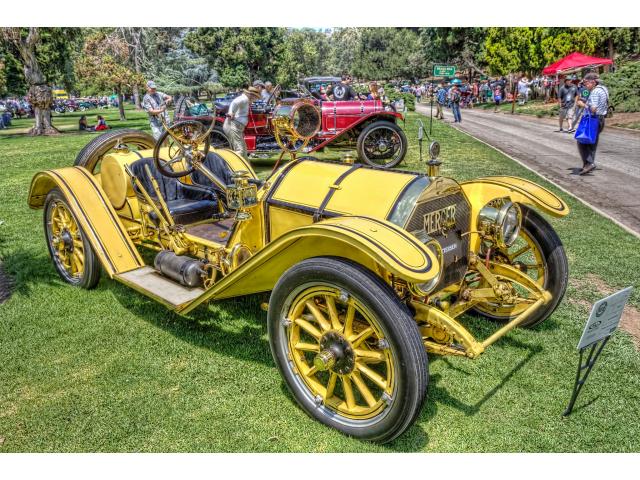1913 Mercer Model 35J Raceabout
- Brand: Mercer
1913 Mercer Model 35J Raceabout
What qualifies as a proper sports car? The ability to go fast is by itself not enough for the moniker. It is very much a combination of a powerful engine, fine handling and great ergonomics. Often one of these comes at the expense of another, so a sports car is very much a compromise. With the Type 35J Raceabout, introduced late in 1910, fledgling American manufacturer Mercer was the first company to get the mix of sports car ingredients right. Up until then 'fast cars' simply consisted of the largest possible engine strapped to a simple frame and were literally lethal machines. Such a big break with tradition was perhaps only possible with a newly founded company like Mercer.
Mercer was established only two years earlier by two very rich families from Trenton, New Jersey. In an act of absolute modesty, the company was not named Kuser or Roebling, but Mercer after the local county. The Kusers supplied the financial expertise as well as an old brewery to house the factory. Ferdinand Roebling was named president of the company and his nephew Washington was general manager. Having designed the Brooklyn Bridge several decades earlier, the Roeblings were quite familiar with engineering, be it on quite a different scale. To convert Washington Roebling's ideas to an actual design, the company hired the talented Finley Robertson Porter as chief engineer. Washington's brief for Porter was quite simple; the Mercer should be a fast, low-slung machine.
Porter subsequently did not design the lowest car possible and did not fit it with the most powerful engine he could find. Instead he compromised and came up with a complete package. The individual parts, while of the highest quality, were not breaking any new ground, but Porter placed them just right. The demanded 'lowness' was achieved by swooping the frame rails up at both ends to clear the suspension. Typical of the no expense spared approach was the adoption of Houdaille friction-dampers, which had to be imported from France. A relatively small 4.9 litre (300 cid) four cylinder 'T-Head' engine was sourced from Beaver. It used two lateral camshafts, actuating the side-valves through push-rods. Equipped with twin plugs per cylinder, it produced a very competitive 58 bhp at 1800 rpm. Only the bare essentials were covered with body panels, leaving the driver and his passenger fully exposed to the elements.
As mentioned earlier, the Mercer Type 35J Raceabout was so much more than the sum of its parts. Although weather protection was not on his lists of priorities, Porter did look closely at driver ergonomics. Unlike most on cars of the era, all of the Mercer's controls were accessible without having to lean over. This, together with the low and light chassis, actually made the Mercer quite easy and above all fun to drive. Even back then racing was a very powerful marketing tool and it did not take long before the Raceabouts took to the track. Even though it was designed for road use, the Mercer turned out to be an incredibly successful racer. The hundreds of victories that were scored, often against much more powerful machinery, were testament of the car's fabulous design. It even faired well against purpose built Grand Prix racing cars, finishing second in the 1913 Indy 500 behind a 4-valve per cylinder Peugeot. In 1914 the Mercer finally found its equal in the very similar Stutz Bearcat, which did use a much larger engine.
Within a few months after the introduction of the Raceabout, Mercer was a household name and it is estimated that up to 1000 examples were sold. Due to its high price, customers were mainly young heirs to large fortunes who were always searching for new thrills. With a top speed of over 70 mph and superb handling, the Type 35J offered them more thrills than any other car on the road. Sadly the successes for Mercer were short lived and things started to go downhill when Washington Roebling perished on the Titanic in 1912. Porter left the company not much after and attempts by his replacements to make the Raceabout competitive again (by installing a larger engine) did not help much. Mercer continued to produce more civil cars, like they had also done in the days of the Type 35J Raceabout, until 1925.
Today the Mercer Type 35J is generally considered the finest and most desirable car of its era. It is estimated that only 17 genuine examples of the Raceabout have survived. A large majority has been restored to concours condition and fortunately several are still actively used.
Descriptions & pictures by ultimatecarpage & wikipedia & hiveminer & bonhams
| Specification | |
| Production Start | 1913 |
| Country of origin | USA |




































